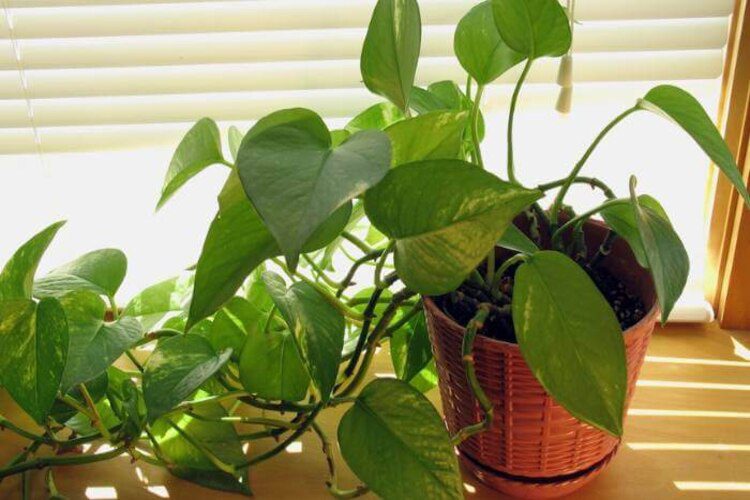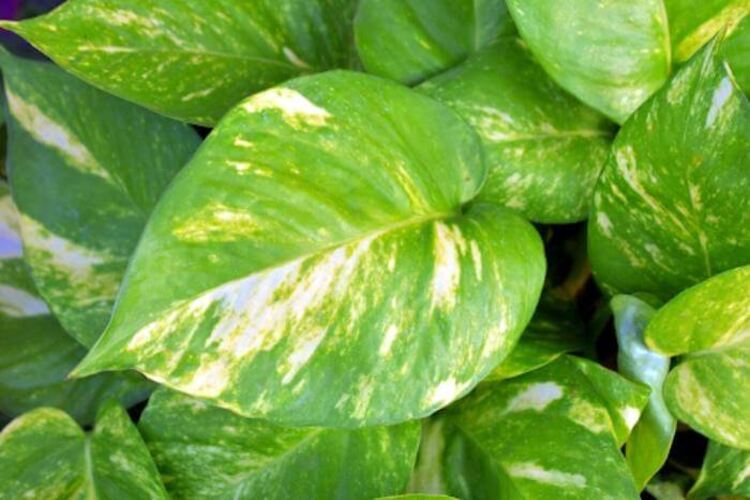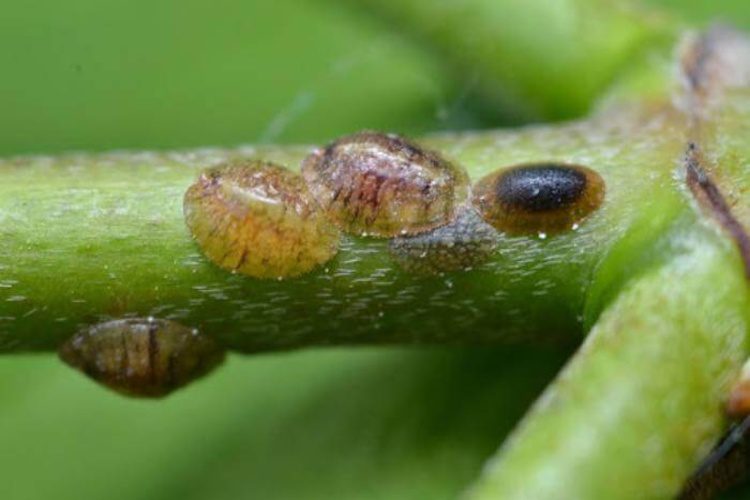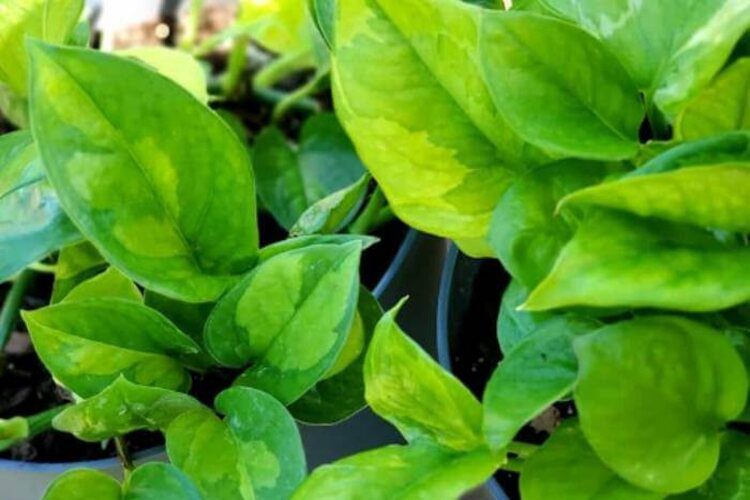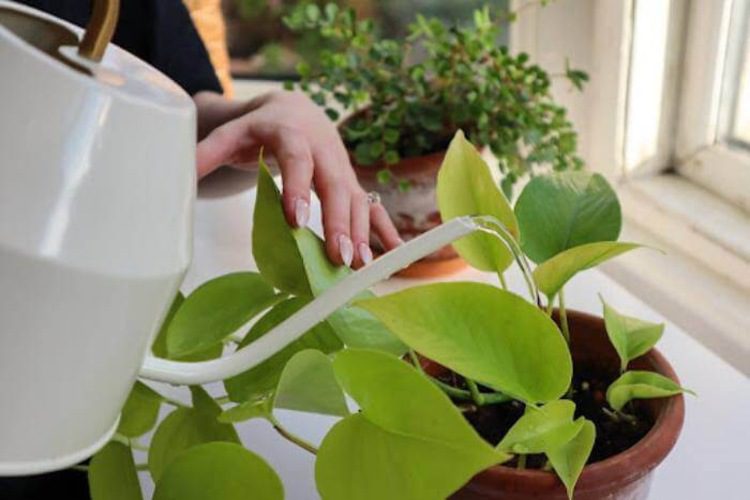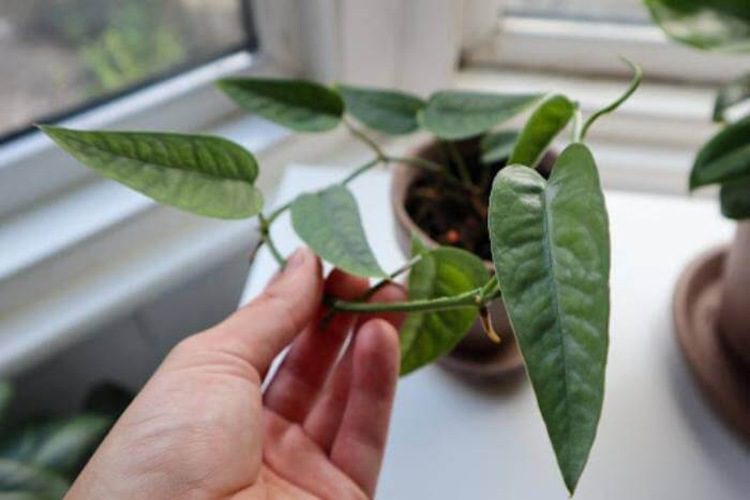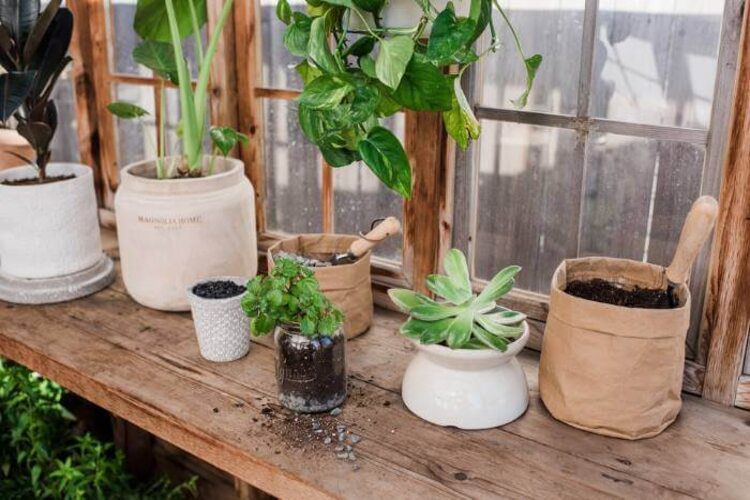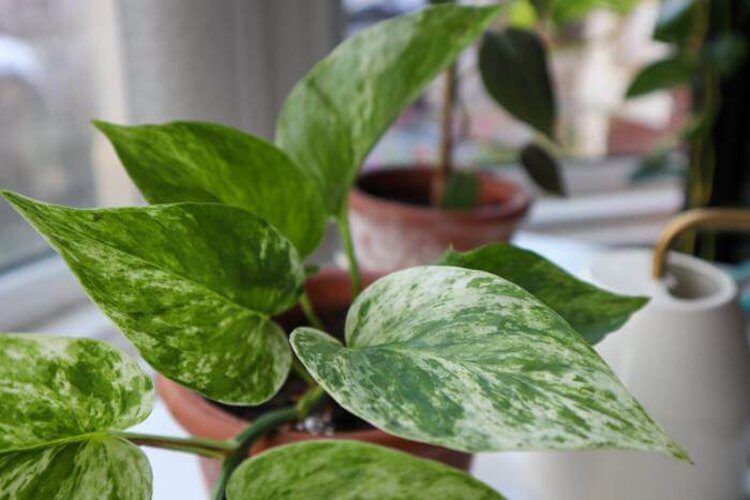Harlequin Pothos Care: The Mysterious Plant May You Know
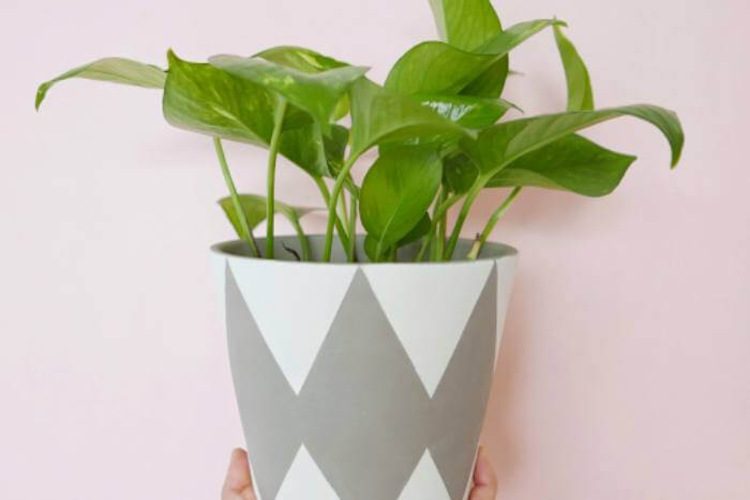
Looking for a houseplant that needs little care and less maintenance? Observe the Harlequin plant! This magnificent plant, if you can locate one, is perfect for people who don’t have a green thumb because of the striking patterns on its, if any, green foliage. In other words, the Harlequin is strikingly unusual in addition to being incredibly gorgeous. Even though many houseplant collectors would want to have one, it’s easier said than done to get one, especially considering that a different kind of pothos is occasionally mistaken for one of these.
Continue reading to learn everything there is to know about this plant, and if you are lucky enough to discover one, we’ll also go over how to take care of it so it looks and feels its best.
About Harlequin Pothos
Araceae is the family that includes the uncommon pothos we are learning about. The plant, which is native to Southeast Asia, has unusual leaves that are widely variegated, with extensive areas of white and some green color scattered throughout the foliage.
The Harlequin pothos scientific name is Epipremnum Aureum Harlequin, and it has a remarkable appearance. This is important to know since it’s typical for people to complain that plants are being marketed under the name “Harlequin Pothos” when, in reality, they are another kind of Pothos, most frequently the Manjula Pothos and the less common Jade Pothos, Silver Ann Pothos, or Marble Queen Pothos. Hardiness zones 10–12 are ideal for growing Epipremnum aureum. Its pricey, heart-shaped, light green and white leaves will spread if you place it in an area with as much strong indirect light as possible without giving it direct sunlight.
Silver Ann Pothos and the Marble Queen Pothos are two other popular pothos cultivars that have similar variegation to the Harlequin Pothos. However, the Silver Ann Pothos has more pronounced white markings on its leaves, and the white markings are more evenly distributed throughout the leaf. The Marble Queen Pothos has more irregular white markings on its leaves, and the white markings are more concentrated towards the edges of the leaf.
Harlequin Pothos Care
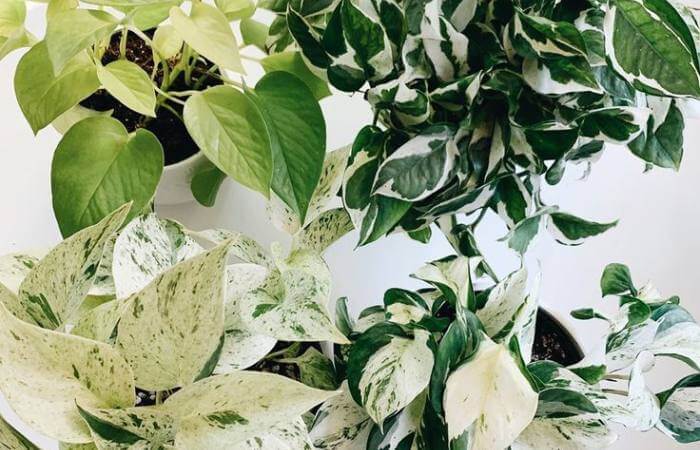
Harlequin Pothos is a common indoor plant since it requires little maintenance. It is frequently advised for novices who want to start caring for plants. The plant can withstand a variety of environmental factors, making it the perfect choice for beginners.
It is unlikely that your plant will perish even if you neglect it for a few weeks. But it’s crucial to remember that if the plant is neglected, it won’t survive. Giving your pothos the right care is essential if you want them to remain healthy and look their best.
Light
Bright, indirect light is ideal for the Harlequin plants. You can use artificial light to make up for a lack of natural light where you reside. Direct sunlight should be avoided, use indirect light instead. Although the plant can handle a variety of lighting situations, total darkness is not ideal for it. Look at the leaves if you’re wondering if your pothos are receiving enough bright light. They may be showing signs of inadequate light if they are browning or yellowing.
Soil
This pothos plant thrives in a combination that drains well. By using perlite, you might also decide to create your potting mixture. This plant prefers constant, uniform moisture in the soil. Additionally, it’s essential to have good drainage to prevent problems like root rot and fungus illnesses.
Watering
For optimum growth, this pothos plant needs appropriate watering. Overwatering puts you in danger of developing illnesses like root rot. Inadequate watering, especially on warm days, can cause plant roots to dry out. For Harlequin, the growth medium should be consistently moist.
To determine if your plant needs watering, use this simple procedure. If the container still has damp, muddy soil in it, you can test it with a wooden skewer or pencil. Alternatively, you may just feel the moisture with your finger. If the soil is dry in the upper half, water your plant. Excess water may be removed with the use of a chunky, aerated soil mixture and a porous container with drainage holes.
Fertilizer
During the growing cycle, these plants should get fertilization around once a month. Slow-release or liquid fertilizer are both options (with our top picks for the best pothos fertilizer being available here). Follow the directions on the fertilizer label carefully since too much fertilizer might damage the plant’s roots.
Temperature
Being a tropical plant, the Harlequin enjoys warm climates. It prefers temperatures between 60 and 75 degrees Fahrenheit (17 to 25 degrees Celsius). The leaves of the Harlequin begin to turn brown and fall off if the temperature drops too low.
Humidity
Like all varieties of pothos, the Harlequin performs best in humid settings. Suppose you live in an area with low humidity. In that case, you may install a humidifier, put the plant on a pebble tray, gather plants together to promote humidity, or, as a temporary solution, spritz the plant to enhance the moisture in the air.
Repotting
Your pothos roots will have more room to expand if you move them into a bigger pot. The stems of your plant will often turn dark brown or black and get mushy when the roots are crammed into a small space. This expensive plant often has to be repotted every one to two years. It is preferable to use fresh, well-draining mix instead of the old, nutrient-deficient soil when filling the new pot.
Read more:
Harlequin Pothos Propagation
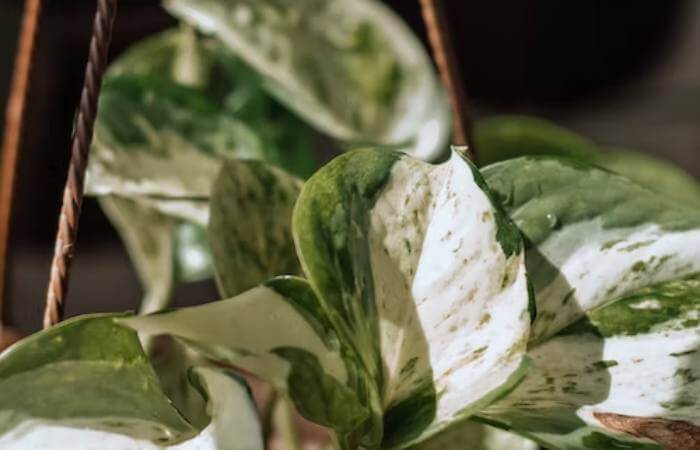
There are several techniques for spreading pothos plants. So how to propagate Harlequin Pothos? Follow the instructions we’ve provided below for each special strategy to increase your chances of success.
Soil Propagation
A primary method for cultivating Harlequin is to plant stem cuttings directly in the ground. If you don’t already own this plant, you may get a cut from Etsy or the Facebook Marketplace for your neighbourhood. For your plant to recover more rapidly from transplant shock, it is best to propagate throughout the spring and late summer.
Step 1: Removing a healthy area of the plant requires using clean pruning shears. A cutting should ideally be at least three inches tall, and have a few leaves and some nodes.
Step 2: In a container or pot, bury the stem’s nodes in some moist potting soil. To keep the plant in place, bury the stem in the ground or fasten it with wooden skewers. Root growth may be hampered by excessive movement.
Step 3: Position the container next to a window.
Water Propagation
The five-step procedure for propagating a Harlequin in water.
Step 1: Take a piece of the stem that has at least one node and fresh growth on it.
Step 2: To see how the cutting’s roots develop, immerse it in a clear container or a glass of water.
Step 3: Maintain the cutting in a well-ventilated, light place.
Step 4: To avoid bacterial infection, don’t forget to replenish the water every 3-5 days.
Step 5: After two weeks, assess your improvement. Transplant the cutting into a sterile potting mix if the roots are at least an inch long.
Division
For plants that generate pups from their roots, division is a typical method of proliferation. To separate the stem clusters on your Epipremnum Aureum Harlequin, use the following techniques:
- When you remove the plant from the container, you should be able to see the plant’s natural divisions.
- Use your fingertips to gently separate the pieces; shears may be needed to cut any tangled roots.
- Subsequently, plant each section in fresh pots with the same soil.
Harlequin Pothos Problems
Numerous pests, issues, and illnesses can affect your beloved pothos. I’ll discuss some of the most common problems with this plant in the sections that follow, along with some suggestions for solutions.
Mushroom Gnats
Small insects known as fungus gnats consume organic decay found in soil, potting soil, and other container media. Their larvae consume roots as well as fungi and other organic matter found in the soil, which is terrible news for your Epipremnum Aureum Harlequin. On contact, hydrogen peroxide destroys fungus gnat larvae. To get rid of these bugs, soak your soil in a solution made of four parts water and one part hydrogen peroxide.
The benefit of hydrogen peroxide is that it naturally occurs in rainwater and reoxygenates the soil. You can spray one teaspoon of neem oil diluted in 500 milliliters of water on the leaves of your Harlequin to ward off scales as a prophylactic measure. The affected plant can also be placed adjacent to the release of ladybirds or lacewings, and these insects will take care of the issue.
Aphids
Aphids can be colored green, black, red, brown, yellow, orange, or white and are typically seen on your Harlequin as a group of bugs. They spread like wildfire and may quickly harm your plant.
In particular, new shoots, flower buds, and new growth areas are attractive to aphids. As they consume the sap, they will leave behind unsightly black and white splotches. If you see any of these disgusting crawlers, you should isolate the infected area.
Harlequin vs Manjula Pothos
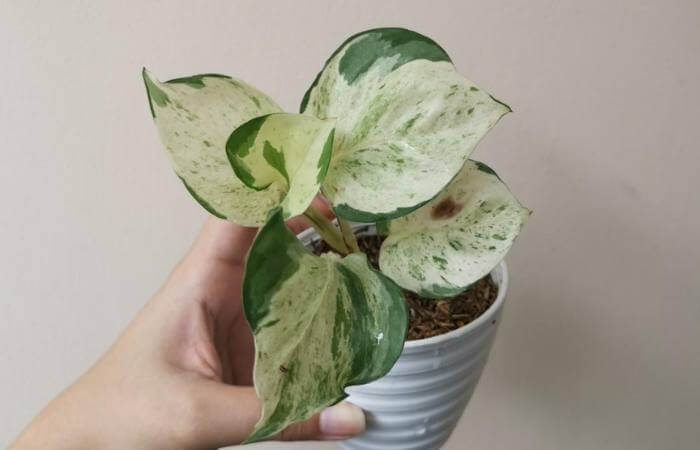
Harlequin is a distinct representative of the Pothos world; it is far from being like its ancestor, Golden Pothos, and has nothing to do with Cebu Blue Pothos, which featured dark green leaves. However, there is one species, Epipremnum aureus Manjula, or Manjula Pothos, which was created at the University of Florida. Manjula grows slowly because of the leaves’ silver, cream, and white variegation. This is because less chlorophyll in the leaves means less food for accelerated development. Manjula Pothos thrives in low-to-medium-light environments when grown as a houseplant.
Despite having a similar appearance, the Majula and the Harlequin Pothos are two separate species of plants. They have similar remarkable variations, such as Manjula Pothos, which is much more widely available and shouldn’t cost as much. Having said that, there’s no denying that both of these plants are stunning, and you can’t go wrong with either of them.
Conclusion
Because of its mottled light and green, white variegation, the Harlequin Pothos is an excellent addition to any plant enthusiast’s collection. We hope you’ve learned some useful tips for raising your beloved pothos, whether you’re a beginner indoor gardener or a seasoned enthusiast curious to learn more about this specific plant. Help us develop! This article includes affiliate links, which means that if you click on one and buy something, we will be compensated. But we make our own decisions, and we don’t get paid for good reviews.
FAQs


